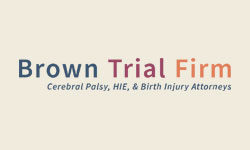Birth Injury Associated with Pitocin
Uterine hyperstimulation is a complication that can occur with excessive use of Pitocin during labor. Pitocin is a medication administered to pregnant women to induce or speed up labor. It is a synthetic form of oxytocin – the hormone a mother’s body produces naturally during labor. Pitocin causes the uterus to contract. If too much Pitocin is administered, the uterus may contract too frequently, the contractions may last too long, or the uterus may not relax enough between contractions.
Blood flow to the placenta stops or slows down during labor contractions and resumes when a contraction is over. The placenta “recharges” between contractions, keeping the infant in the uterus supplied with life-giving blood and oxygen. Uterine hyperstimulation can cause a decrease in the flow of oxygen from the mother to the baby.
Uterine Hyperstimulation and Birth Injuries
In natural labor, the mother’s body produces periodic bursts of oxytocin to produce contractions that gradually become stronger, longer, and closer together, until finally, the child is delivered. When synthetic Pitocin is administered, however, the mother receives a continuous IV drip of the drug. This produces contractions that are different than those that will naturally occur with a woman in labor.
When labor contractions come too close together and last too long in the earlier phases of labor, the infant’s supply of blood and oxygen will diminish, and fetal distress can occur when the unborn baby becomes oxygen-deprived. This can cause harm to the infant, including:
- Hypoxia (oxygen deficiency);
- Ischemia (inadequate blood supply to an organ or a part of the body); and
- Acidosis (excessively acid condition of body fluids and tissues).
Uterine hyperstimulation from excessive use of Pitocin can also cause injury to the mother. It can result in uterine rupture, which is a life-threatening condition for both mother and baby.
Uterine Hyperstimulation and Medical Negligence
The use of Pitocin to induce or augment labor may be medically necessary in certain situations, for example, when the mother is beyond the 41st week of pregnancy, or when the membrane has broken and labor has not yet begun. However, not all medical professionals agree that Pitocin should be used to electively to induce labor when it is not a medical necessity.
Laboring mothers respond differently to Pitocin. When this drug is administered, it is very important for medical providers to carefully monitor the dosage, watch for signs of uterine hyperstimulation, and monitor the baby for signs of hypoxia. In a recent study published in the American Journal of Obstetrics and Gynecology, researchers established a link between the use of labor-inducing drugs and uterine hyperstimulation resulting in birth injuries.
Uterine Tachysystole and Risks to Newborns
“Tachysystole” means an abnormally rapid rate of muscle contraction. When Pitocin (a hormone used to induce contractions) is administered to pregnant women to induce or speed labor, it can cause uterine tachysystole – a condition in which contractions occur six times in a period of ten minutes. In a recent study published in the American Journal of Obstetrics and Gynecology, researchers found that tachysystole can impact fetal heart rate and cause health problems for the newborn baby.
What Is Pitocin and How Does It Work?
Pitocin is a synthetic version of the natural hormone oxytocin, which is produced in the mother’s body during labor to stimulate uterine contractions. The first contractions help place the baby in position for delivery. Increasing bursts of oxytocin cause contractions to gradually become longer, stronger, and closer together, until the child is born.
Doctors use Pitocin to artificially initiate labor and stimulate the necessary contractions. Women given Pitocin receive a continuous IV drip, as compared to the periodic bursts of oxytocin naturally produced by the body. Contractions artificially induced with Pitocin are different than those occurring in natural labor.
How Tachysystole Can Affect the Unborn Baby
The fetus is fed through the umbilical cord, which provides oxygen and other nutrients from the placenta, which is embedded in the wall of the uterus. During labor contractions, the flow of blood and oxygen into and out of the placenta slows or stops. Between contractions, while the placenta is at rest, the flow resumes, and the placenta is recharged with a fresh supply of blood and oxygen.
When contractions are too long or very close together, the placenta has insufficient time to recharge, and the infant may be deprived of oxygen. This can result in birth injuries, such as cerebral palsy, birth asphyxia, and intellectual and developmental disabilities.
Pitocin and similar drugs are widely used by physicians for inducing and speeding labor. These drugs have the effect of making contractions both longer and closer together. When oxytocin is administered early in labor and contractions become less than two to three minutes apart, the infant’s oxygen levels can decrease, causing fetal distress.
Excessive uterine contractions are also a risk factor for a condition known as fetal acidemia, in which the baby’s blood becomes too acidic at birth. This condition can cause damage to the cells in the child’s entire body, particularly in the brain.
Research on Tachysystole and Birth Injuries
In a study published in the American Journal of Obstetrics and Gynecology, researchers found 7,567 tachysystole events among 50,335 deliveries. The occurrence of tachysystole doubled with the use of artificial oxytocin. Researchers also found that:
- A dose-response correlation exists between Pitocin (oxytocin) and tachysystole;
- Fetal heart rate changes occurred in 25% of tachysystole events; and
- Tachysystole increases the chance of neonatal morbidity (a diseased condition or state during the first 28 days of life).
Talk to Us About a Tachysystole Birth Injury
If your labor was induced with Pitocin and your baby suffered serious birth injuries, it is in your best interest to speak with a birth injury attorney as soon as possible. Laura Brown can meet with you in a free consultation to discuss your child’s injuries and how to move forward in investigating a case of medical negligence in the birth process.
Sources:
- American Journal of Obstetrics and Gynecology: Tachysystole in term labor: incidence, risk factors, outcomes, and effect on fetal heart tracings.
Have questions about a birth injury?
- Cerebral Palsy
- Caput Succedaneum and Cephalohematoma
- Neonatal Intracranial Hemorrhage (Childbirth Brain Bleeds)
- Hydrocephalus (Extra Fluid in the Brain Cavity)
- Cervical Dystonia
- Hemiplegia (Brain or Spinal Cord Injury)
- Hemorrhagic Stroke
- Neonatal Stroke
- HIE
- Periventricular Leukomalacia (PVL) Brain Injury
- Infant Seizures
- Spastic Diplegia (Spasticity in the Legs)
- Top Risks for Birth Injuries
- Fetal Alcohol Syndrome
- Facial Paralysis
- Spinal Cord Injuries
- Bell’s Palsy
- Brachial Plexus Nerves & Erb’s Palsy
- Klumpke’s Palsy
- G-Tubes for Newborns
- Medical Errors
- Cesarean Section & Birth Injury
- Negligence in Brain Cooling Treatment
- Craniosacral Therapy
- Occupational Therapy
- Speech Therapy
- Transition From Pediatric to Adult Healthcare
- Surgical Options for Spastic Cerebral Palsy
- Fetal Intolerance to Labor
- Jaundice (Kernicterus)
- Breech Position
- Placental Complications
- Umbilical Cord Problems
- Uterine Rupture
- Cervical Incompetence (Insufficiency)
- Blighted Ovum
- Necrotizing Enterocolitis (NEC) - Intestinal Inflammation
- Cephalopelvic Disproportion
- Meconium Aspiration Syndrome
- Amniotic Fluid Embolism
- Birth Injury from Premature Delivery
- Developmental Delays
- Abnormal Cord Insertion
- Infections at Birth
- Chorioamnionitis Bacterial Infection
- Premature birth
- Oxygen Deprivation
- Listeria
- Birth-Acquired Herpes
- Placenta Previa
- Placental Abruption
- Mismanaged Fetal Malposition
- Rapid Labor
- Obesity Related Birth Injuries
- Intrauterine Growth Restriction
- Blood Clots During Pregnancy
- Ectopic Pregnancy Misdiagnosis
- Myths & Facts About Birth Injuries
- Bacterial Vaginosis
- Gestational Diabetes
- Maternal Mortality Risk
- Oligohydramnios (Low Amniotic Fluid)
- Infections During Pregnancy
- Excessive Bleeding During Pregnancy
- Congenital Syphilis


